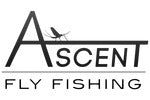Mastering the Davy Knot: A Game-Changer in Fishing Knots
There are certain anglers that when they enter the fly shop and open their mouths to share a piece of fishing wisdom hard earned over decades on the water, it pays to stop and listen! Earlier this month I had one such moment of pause when fly tyer extraordinaire and engineer Scott Stisser started espousing the merits and multiple applications of the Davy Knot. I know we all have our go-to fishing knots that our fingers tie almost instinctively, but having witnessed how meticulously Scott is in the construction of his Atlantic Salmon flies and after a long career as an engineer where strength and performance really mattered, I perked up and leaned in as he started to break down this small, stronger, and versatile knot that can be used both for attaching flies to the line, and also line to line dropper rigs. The Davy Knot is a simple yet effective knot offering several advantages over the more commonly used Clinch and Orvis Knots. In this guide, we'll delve into why the Davy Knot stands out in the world of fishing knots and how to tie it.
The Benefits of the Davy Knot over Clinch and Orvis Knots:
Strength and Reliability:
- The Davy Knot exhibits exceptional strength, holding up well under the pressure of fighting fish. Its compact design ensures a reliable connection, reducing the risk of knot slippage or failure.
Quick and Easy to Tie:
- The Davy Knot might just be the easiest and fastest to tie knot in the fly fisher’s tool box! Gone are the multiple twists looping back and forth, and miniscule holes to thread of the Orvis and Clinch knots. The Davy Knot’s uncomplicated structure allows for quick tying, making it an ideal choice for on-the-fly adjustments.
Minimal Material Waste:
- Unlike the Clinch Knot and Orvis Knot, the Davy Knot requires less line length for tying. This can be advantageous when using expensive fluorocarbon and minimizes waste.
Low Profile and Reduced Snagging:
- The Davy Knot is a TINY knot and its low-profile is ideal for both large flies and those all the way down to size 28! Its small stature allows it to blend into the eye of the hook and rarely if ever catches on vegetation or algae when drifting.
Perfect for Tying In-Line Droppers:
With your lead fly tied to the end of your leader, a second dropper fly tied to the end of a separate piece of tippet can be added to the leader above your lead fly using a davy knot. The benefit of using a davy knot in this position is that it is strong, it is small, and it can slide! If you need to switch out your lead fly, simply slide the davy knot holding your dropper up the leader, switch it your lead fly, and then slide your dropper back down the leader to the eye of the hook of your lead fly.
How to Tie the Davy Knot: 
Tying the Davy Knot is a straightforward process that anglers of all levels can quickly master. Follow these simple steps to secure your line with this reliable knot:
Step 1: Thread 3 to 4 inches of leader or tippet through the eye of the hook, then create a loop by bringing the tag end up to the standing line.
Step 2: Create a loose Overhand Knot.
Step 3: Bring the tag end back through the loop and above the standing line, making sure to pass between the overhand knot and the eye of the hook.
Step 4 - Finishing the Knot: Moisten the knot with saliva before drawing it tight to prevent friction burns to the line. To tighten the knot, first pull on the tag end to draw up the knot, then on the standing line to set the knot. Trim off the excess line from the tag end.
If you are tired of counting twists and missing loops on clinch and orvis knots, the small but mighty Davy Knot is the knot you need! Its ease of tying, strength, and versatility make it a standout option for the fly fisher. As you embark on your next fishing adventure, consider incorporating the Davy Knot into your repertoire and experience the difference it can make in securing your flies and your catch.
FOM
The Mole Fly
Sizes 16-18 
Upon reaching the surface of the water, the emerging midge or chironomid pupa tears from the pack of its pupal skin and lifts its wings straight up out of the water. These emerging midges are far from home free, and feeding trout are ready to ruin their day and eat them before they have a chance to fly away. The Mole Fly has been tied to take advantage of these final seconds of the midge hatch and is an excellent fly pattern for targeting trout that are rolling and feeding on midges at the surface.
Dry/Wet: Dry or Wet
Fly Category: Generalist Pattern
Family: Midges & Chironomids
Species: NA
Life Stage: Pupa, Emerger


